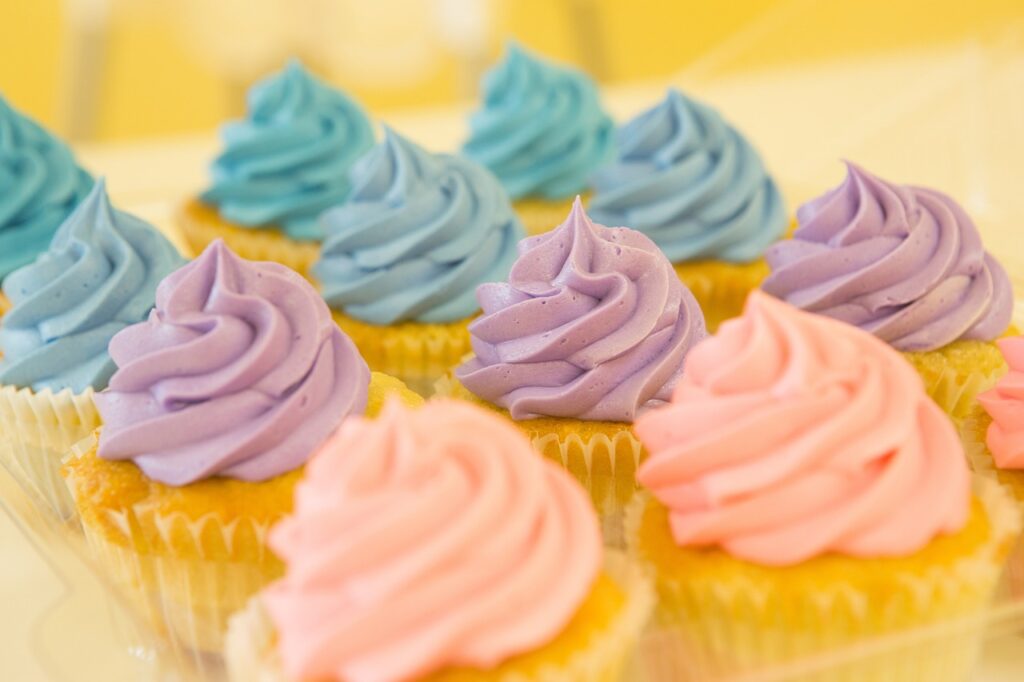I first made these cakes when I was trying to clear out a stubborn half-jar of orange marmalade lurking at the back of the fridge. I didn’t expect much—just another “decent but forgettable” bake. But oh, how wrong I was.
The base came out crisp like shortbread, the marmalade transformed into a jammy layer, and the golden sponge puffed up like a proud little hat. But the first attempt? A disaster. I overfilled the pastry cases, and the filling oozed everywhere—burnt sugar, stuck tins, you name it.
Let me show you how I fixed that—and why these have become my go-to bake when I want something that feels special but is surprisingly easy.
Why This Recipe Works
Unlike most marmalade bakes that simply stir marmalade into the sponge, this one is clever. It layers the ingredients: a crisp pastry base for crunch, a tangy marmalade layer for sharpness, and a light, fluffy sponge topping to pull it all together.
Here’s what surprised me: the contrast. The sharp-sweet orange against buttery pastry is like a posh Jaffa Cake meets a Bakewell tart. And baking them in muffin tins? Genius. Each person gets their own mini cake, with no soggy middles.
Ingredients & Why They Matter
-
Plain Flour (for pastry) – It keeps the base crisp and short. Self-raising flour would cause it to puff too much, ruining the structure.
-
Cold Butter (for pastry) – The colder, the better. Warm butter makes the dough greasy, not flaky.
-
Orange Marmalade – Go for a chunky, high-quality marmalade. I once used Seville orange marmalade from Borough Market, and it made all the difference.
-
Margarine (for topping) – Lighter than butter, it gives the sponge a soft texture without being greasy.
-
Caster Sugar – Dissolves easily into the batter, while granulated sugar can leave it gritty.
-
Eggs – Essential for helping the topping rise and binding the ingredients together.
-
Self-Raising Flour + Baking Powder – These help the sponge rise beautifully. I’ve tried it without the baking powder, and the result was flat as a pancake.
-
Orange Zest – This brightens the entire flavour profile and balances the sweetness.
Customizations (Without Ruining It)
-
Citrus Swap – Lemon or lime marmalade works wonderfully—just match the zest to the marmalade (lemon zest for lemon marmalade, etc.).
-
No Eggs? – I’ve tried flax egg (1 tbsp flaxseed meal + 3 tbsp water), and though the rise wasn’t as strong, it still held together.
-
Gluten-Free – I used Doves Farm gluten-free plain flour for the pastry and gluten-free self-raising flour for the topping. It worked well, but be sure to chill the pastry for 20 minutes before rolling, or it’ll become too soft.
-
Jam Instead of Marmalade? – Strawberry jam makes it too sweet. Apricot works, but marmalade’s signature bitterness is key.
Mistakes I’ve Made (And How to Avoid Them)
| What Went Wrong | Why It Happens | How to Fix It |
|---|---|---|
| Topping overflowed | Overfilled the pastry cases | Use just a teaspoon of topping, no more. |
| Pastry shrank in the tin | Didn’t chill dough before baking | Chill cut dough rounds for 10 minutes before baking. |
| Cakes stuck in the tin | No greasing, hot marmalade leaked | Lightly grease your muffin tin, even if it’s non-stick. |
How to Make Mary Berry’s Marmalade Cake
1. Preheat & Prep
Preheat your oven to 180°C (160°C fan). Grease two 12-hole muffin tins (if not non-stick).
2. Make the Pastry
Rub the cold butter into the flour until it reaches a breadcrumb-like texture. Slowly add cold water, just enough to bring the dough together. It should feel firm but pliable.
3. Roll & Cut
Roll out the dough on a floured surface. Cut out 24 circles using a 3-inch fluted cutter, then press gently into the muffin tin holes.
4. Add the Marmalade
Spoon ½ teaspoon of marmalade into each pastry case. Be careful not to overfill, as it will bubble up.
5. Make the Topping
Beat the margarine, sugar, eggs, flour, baking powder, and zest together until smooth. The mixture should look light and airy.
6. Assemble
Top each pastry case with a heaping teaspoon of the sponge topping. Don’t press it down—just let it sit gently on top.
7. Bake
Bake for 30–35 minutes, or until the sponge is golden and springs back when lightly pressed. The pastry should be golden at the edges.
8. Cool & Serve
Allow the cakes to cool in the tin for 5–10 minutes before transferring them to a wire rack. Dust with icing sugar if desired.
Kitchen Tips
-
Muffin Tin vs. Silicone – I prefer using a metal muffin tin, as it conducts heat better than silicone.
-
If Pastry is Too Soft – If the pastry dough feels too soft, pop it in the freezer for 5 minutes before baking.
-
Zest the Orange Straight Into the Bowl – The oils from the zest add extra punch to the flavour.
-
Freezing – These cakes freeze wonderfully. Just refresh them in a low oven (140°C for 8 minutes).
Storage & Serving
-
Room Temp: Keeps for up to 3 days in an airtight tin.
-
Fridge: Up to 5 days—reheat slightly to restore texture.
-
Freezer: Wrap individually and freeze for up to 2 months. Defrost at room temperature and warm in the oven.
What to Serve With
-
Pair with a strong black tea or Earl Grey.
-
For a treat, serve warm with a dollop of crème fraîche.
FAQs
Q: Can I use homemade marmalade?
A: Absolutely! Just make sure it’s thick and chunky. If it’s too runny, it will leak.
Q: Why didn’t my sponge rise?
A: Ensure your baking powder is fresh and active. Also, don’t overmix the batter—just stir enough to combine.
Q: Can I bake this in a single tin instead of muffin cases?
A: I tried it in a tart tin, but the pastry base didn’t cook as evenly. Stick with muffin tins for the best results.
Q: Do I need to chill the pastry dough?
A: It’s not mandatory, but a 10-minute chill makes it easier to handle and bake.
Q: Can I use butter instead of margarine in the topping?
A: Yes, but it will make the topping slightly richer and denser. Still delicious, though!
More Recipes to Try:
-
Mary Berry Wimbledon Cake Recipe
-
Mary Berry American Chocolate Wedding Cake Recipe
-
Mary Berry Rich Fruit Cake Recipe
-
Mary Berry Mincemeat Cake Recipe








